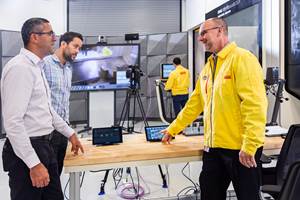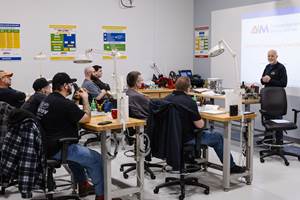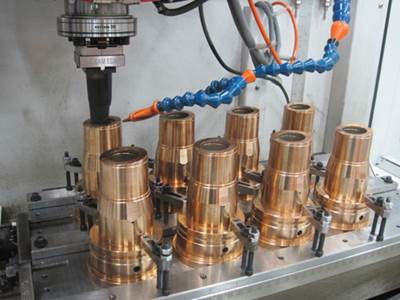How EDM Training Can Boost Productivity
Even the shortest of training sessions provide the opportunity to recover any costs incurred in a very short time.
Increasing the effectiveness of EDM operations does not come solely with technological improvements in the EDM sinker. This is one of many aspects needing to be considered when working to optimize EDM performance and increase productivity. Other areas of consideration include the type of dielectric fluid, tooling and electrode material used in the EDM applications.
One area often overlooked or disregarded is the training required to make the most of the many factors affecting efficient operations. Any competitive company should seriously consider every occasion to take advantage of any technical training offered by leading suppliers in the industry. This training is often at no charge with the only investment to the company being travel and salary. Even the shortest of training sessions provide the opportunity to recover any costs incurred in a very short time.
A case in point includes a company engaged in EDMing—primarily carbide—that was experiencing significant electrode wear and slow burn times, so they sent an employee to a recent EDM-specific training session.*
The wear and slow burn times demanded an increase in the volume of electrodes produced; therefore, not only adding to material cost, but significantly increased manufacturing costs for machining these electrodes.
One of the topics covered in the training included electrode material selection, honing in on the advantages of specific material when EDMing high thermally conductive metals. As it turns out, this company was purchasing the wrong type electrode material for EDMing carbide.
When working with metals with high thermal conductivity, the workpiece absorbs the spark energy almost instantly and limits the effectiveness of the EDM process unless changes are made specific to these type metals. In the case of this example, the electrode material used was a medium grade non-copper impregnated material and was selected primarily on a lower material costs than others available.
They then realized during this training that copper impregnated electrode materials exhibit significantly lower electrical resistivity values than a non-copper impregnated material and allows for maximum spark intensity in the EDM cut. This not only increases the metal removal rate, but also allows for reduced electrode wear as well.
Another factor learned during this training session included the need to reduce the on-time to a length approximately equal to when the work metal begins to dissipate the spark energy in the cut. Any longer on-time will only serve to increase wear of the electrode without an effective metal removal rate.
Upon the employee’s return, he began to implement the lessons learned during his time at the training. With sample material provided during the training, he began to experience immediate productivity improvements in the EDM. He claims his productivity has increased so much that the company has recovered the cost of the training and much more.
Be sure to contact your supplier for more details on how your company can benefit from attending a training session—with both classroom and laboratory activities for the beginner or the experienced EDM operator—on the products you use in your EDM operations. Look for a program designed to help end users gain a better understanding of how to control the EDM process to achieve predictable results and one that enables you to return with practical information that you can put to use on the shop floor.
*Poco Graphite free training and technical information through its EDM Training Program and EDM Technical Manual.
Related Content
How to Use Continuing Education to Remain Competitive in Moldmaking
Continued training helps moldmakers make tooling decisions and properly use the latest cutting tool to efficiently machine high-quality molds.
Read MoreTackling a Mold Designer Shortage
Survey findings reveal a shortage of skilled mold designers and engineers in the moldmaking community, calling for intervention through educational programs and exploration of training alternatives while seeking input from those who have addressed the issue successfully.
Read MoreMold Maintenance Continues to Matter: Enhanced Training Program in a New Facility
I attended a MoldTrax mold maintenance workshop in 2019 and shared my experiences, and despite changes in ownership, the workshop's remarkable value endures, as discussed in a recent Q&A with the current leadership.
Read MoreDynamic Tool Corporation – Creating the Team to Move Moldmaking Into the Future
For 40+ years, Dynamic Tool Corp. has offered precision tooling, emphasizing education, mentoring and innovation. The company is committed to excellence, integrity, safety and customer service, as well as inspiring growth and quality in manufacturing.
Read MoreRead Next
Changes to Electrode Material And EDM Program Yield Increased Throughput
A look at the positive effects of a change of electrode material.
Read MoreAre You a Moldmaker Considering 3D Printing? Consider the 3D Printing Workshop at NPE2024
Presentations will cover 3D printing for mold tooling, material innovation, product development, bridge production and full-scale, high-volume additive manufacturing.
Read MoreReasons to Use Fiber Lasers for Mold Cleaning
Fiber lasers offer a simplicity, speed, control and portability, minimizing mold cleaning risks.
Read More


















